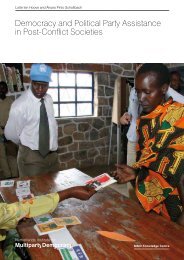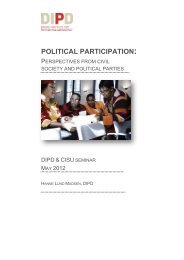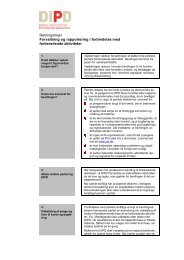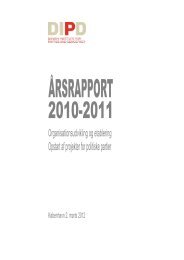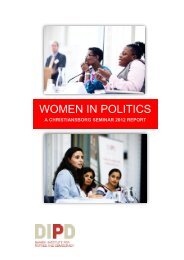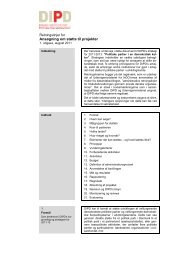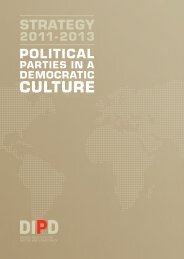Political Parties in Africa: Challenges for Sustained Multiparty
Political Parties in Africa: Challenges for Sustained Multiparty
Political Parties in Africa: Challenges for Sustained Multiparty
Create successful ePaper yourself
Turn your PDF publications into a flip-book with our unique Google optimized e-Paper software.
<strong>Political</strong> <strong>Parties</strong> <strong>in</strong> <strong>Africa</strong>: <strong>Challenges</strong> <strong>for</strong> Susta<strong>in</strong>ed <strong>Multiparty</strong> Democracy<br />
military resistance and political opponents have confronted the Eritrean regime and<br />
the govern<strong>in</strong>g political party. Whether and when Eritrea will become a multiparty<br />
system is difficult to tell, and is largely cont<strong>in</strong>gent on the <strong>in</strong>ternal and external<br />
contexts with<strong>in</strong> which the democratization struggle is launched.<br />
4.2.2 Two-party systems<br />
A two-party system is duopolistic <strong>in</strong> that two ‘major’ parties that have a roughly<br />
equal prospect of w<strong>in</strong>n<strong>in</strong>g government power dom<strong>in</strong>ate it. In its classical <strong>for</strong>m, a<br />
two-party system can be identified by three criteria.<br />
1. Although a number of ‘m<strong>in</strong>or’ parties may exist, only two parties enjoy<br />
sufficient electoral and legislative strength to have a realistic prospect of w<strong>in</strong>n<strong>in</strong>g<br />
government power.<br />
2. The larger party is able to rule alone (usually on the basis of a legislative<br />
majority); the other provides the opposition.<br />
3. Power alternates between these parties; both are ‘electable’, the opposition<br />
serv<strong>in</strong>g as a ‘government <strong>in</strong> the w<strong>in</strong>gs’.<br />
Two-party systems display a periodic tendency towards adversarial politics (see<br />
Heywood 2002: 326). This is reflected <strong>in</strong> ideological polarization and an emphasis<br />
on conflict and argument rather than consensus and compromise. It is also noted<br />
that such systems sometimes operate through coalitions <strong>in</strong>clud<strong>in</strong>g smaller parties<br />
that are specifically designed to exclude larger parties from government. (In similar<br />
ve<strong>in</strong>, Sartori (1976) dist<strong>in</strong>guishes between two types of multiparty system, which he<br />
termed the moderate and polarized pluralist systems. In this categorization moderate<br />
pluralism exists <strong>in</strong> countries where ideological differences between major parties are<br />
slight, and where there is a general <strong>in</strong>cl<strong>in</strong>ation to <strong>for</strong>m coalitions and move towards<br />
the middle ground. This classification is apparently relevant to <strong>Africa</strong>n countries<br />
with a large number of ethnically-based parties.)







